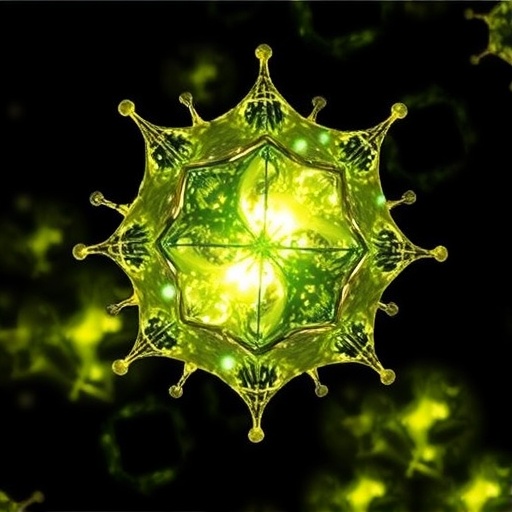Recent studies in the field of photocatalysis have highlighted tremendous potential for innovation in reducing chromium(VI), a significant environmental pollutant. Chromium(VI) is notorious for its toxicity and adverse effects on human health and ecosystems. As a pollutant stemming from various industrial activities, its effective remediation is imperative. A breakthrough in this domain has been the development of Cu₂O-based composite photocatalysts, which have garnered considerable attention for their efficiency in reducing chromium(VI) ions. This mini-review explores recent advancements and the underlying mechanisms that contribute to the effectiveness of these photocatalysts.
Copper(I) oxide, commonly known as Cu₂O, is a semiconductor material featuring a unique combination of properties, including a suitable bandgap and strong light absorption capabilities. Its intrinsic characteristics make it an attractive candidate for photocatalytic applications. The reduction process of chromium(VI) involves the transformation of highly toxic chromium ions to less harmful chromium(III). The efficiency and speed of this reduction hinge on the capabilities of the photocatalyst used. Cu₂O has been shown to effectively initiate photocatalytic reactions under visible light, which offers a considerable advantage over other photocatalyst materials that may require ultraviolet light to activate.
Recent research has further revealed that enhancing Cu₂O with various composite materials can significantly improve its photocatalytic performance. For instance, the amalgamation of Cu₂O with other semiconductors, like titanium dioxide (TiO₂) or graphitic carbon nitride (g-C3N4), can create heterojunctions that facilitate better separation of photogenerated charge carriers. This play on synergies among materials can lead to higher rates of electron-trap formation, which in turn enhances the overall photocatalytic degradation of chromium(VI) by maximizing light absorption and improving charge mobility.
The methodology used in synthesizing these composites plays an equally crucial role in their performance. Various techniques such as sol-gel methods, hydrothermal synthesis, and electrochemical deposition have been employed to produce Cu₂O-based composites with tailored properties. Each technique offers varying control over morphology, size, surface area, and crystalline structure, all of which can directly influence the photocatalytic activity. By controlling these parameters, researchers aim to customize the photocatalysts for optimal light interaction, ensuring maximum efficacy in real-world applications.
In practical applications, the results from laboratory settings are promising. Several studies have documented substantial chromium(VI) reduction percentages using Cu₂O composites. For example, some composites have achieved over 90% reduction within hours under visible light irradiation. This highlights not only the efficiency of Cu₂O-based photocatalysts but also their potential scalability for industrial wastewater treatment processes. With increasing industrialization worldwide, this technology could mean safer disposal practices and reduced environmental pollution from heavy metals such as chromium.
Moreover, one cannot overlook the role of environmental factors during photocatalytic processes. The effectiveness of Cu₂O composites can be influenced by factors such as pH, temperature, and the presence of other ions. Understanding these variables is essential in optimizing the photocatalytic activity in real-world conditions. Researchers are diving deep into such variables to ensure the applicability of these composites is not limited to ideal laboratory conditions but can withstand the challenges posed by actual environmental situations.
Furthermore, addressing the stability and reusability of Cu₂O-based photocatalysts remains a critical aspect of research. Stability is paramount when considering long-term applications. Some studies suggest that certain composites exhibit enhanced resistance to photocorrosion, a common issue with semiconductor photocatalysts. This advancement allows for multiple cycles of chromium(VI) reduction without significant loss of efficiency, thereby presenting a sustainable solution for long-term environmental remediation.
The future directions in Cu₂O photocatalyst research are expansive. Not only are researchers focusing on improving performance metrics, but there is also a strong push towards understanding the fundamental mechanisms at play during the photocatalytic reactions. Gaining insights into electron transfer processes and the role of reactive oxygen species that facilitate reduction will provide the necessary knowledge to innovate further. As our understanding deepens, tailored modifications can be implemented to ensure that these catalysts are not only efficient but can also respond to varying environmental challenges.
Ultimately, the integration of Cu₂O-based composites into environmental management strategies offers a practical approach to mitigating chromium(VI) pollution. In light of increasing global concerns over heavy metal contamination and its dire implications for health and ecology, the emergence of effective photocatalysis may represent a crucial step forward. By providing a cost-effective, accessible method for the remediation of toxic pollutants, these technologies could pave the way for cleaner industrial processes and healthier ecosystems.
The scientific community is optimistic about the advancements in this field, but collaboration across disciplines will be vital to realize the full potential of Cu₂O-based photocatalysts. Engineers, material scientists, and chemists must unify their efforts to enhance synthesis techniques, optimize processes, and scale up implementations. Overcoming the existing challenges will require ingenuity and a commitment to environmentally friendly solutions.
In conclusion, the development of Cu₂O-based composite photocatalysts marks a significant advancement in the battle against chromium(VI) reduction. These materials hold promise for transforming wastewater treatment strategies, providing sustainable approaches to pollution management, and enhancing environmental health overall. The intersection of material science and environmental conservation is where innovation occurs, and it is here that Cu₂O composites may lead us toward a cleaner, more sustainable future.
Subject of Research: Advances in Cu₂O-based composite photocatalysts for chromium(VI) reduction
Article Title: Recent advances in Cu2O-based composites photocatalysts for chromium(VI) reduction: a mini review.
Article References:
Avinash, J., Chellapandi, T., Mohan, J. et al. Recent advances in Cu2O-based composites photocatalysts for chromium(VI) reduction: a mini review. Ionics (2025). https://doi.org/10.1007/s11581-025-06664-9
Image Credits: AI Generated
DOI: https://doi.org/10.1007/s11581-025-06664-9
Keywords: Cu₂O, chromium(VI) reduction, photocatalysis, environmental remediation, composites, sustainability.




